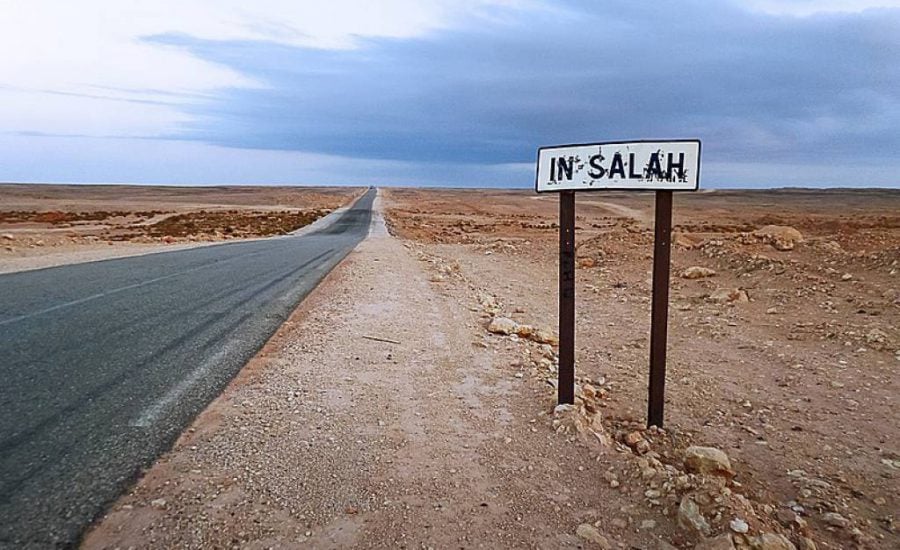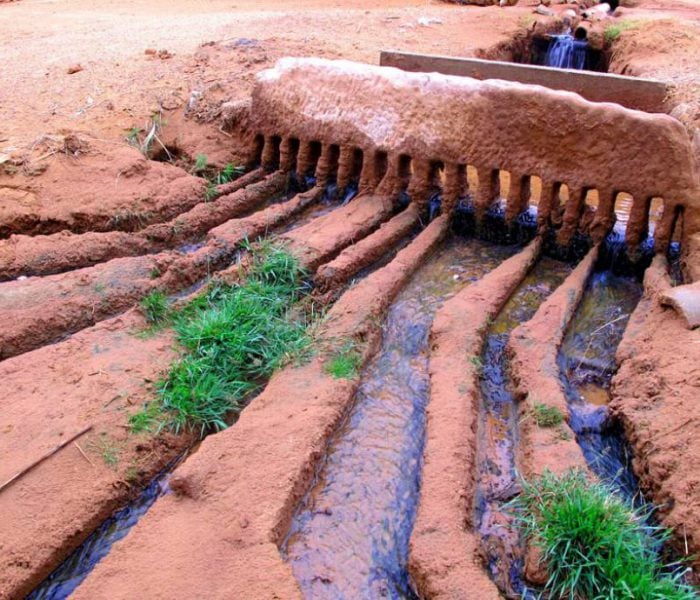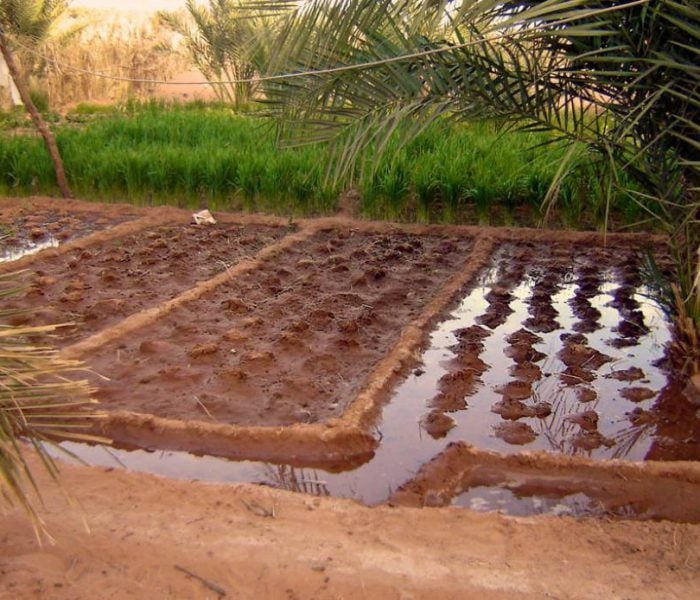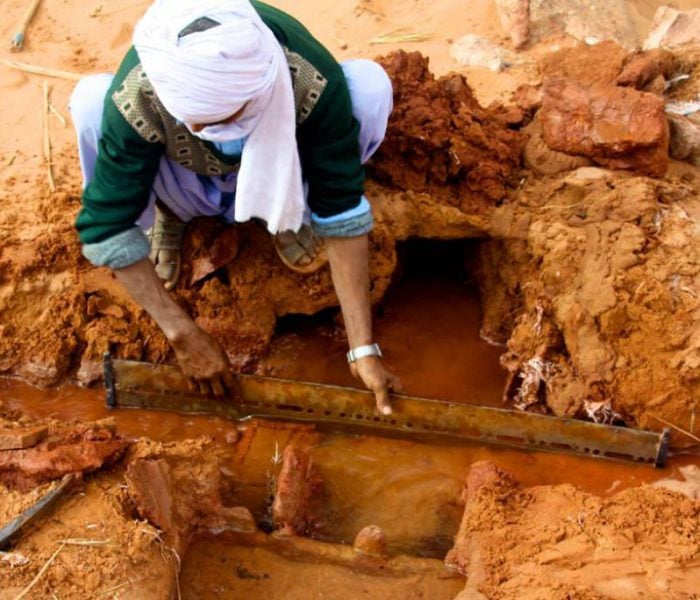
Dams, irrigation systems, wastewater treatment plants, large well fields
Algeria relies primarily on surface water. Currently, it has almost 80 surface reservoirs and aims to increase that to 139 by 2030[1] These reservoirs are intended to meet the drinking water needs and demand for irrigation in the high plateaus. However, the dams face high evaporation, siltation and leakage through their banks and foundations. More specifically, long dry spells mean the dams are rarely full, affecting their reliability as a water source.[2]
To manage the uneven distribution of water resources, large investments were allocated to projects aimed at transferring water from regions with surplus water to regions with water shortages.
| Structure | Capacity |
| 8800 boreholes | 5.7 MCM/d |
| 80 dams | 8.6 MCM/d |
| 11 desalination plants | 2.1 MCM/d |
| 21 transfers (upstream and downstream of dams) | |
| 100 water treatment plants | 5 MCM/d |
| 23 demineralization stations | 254,000 m3/d |
Table 1: Overview of hydrauic infrastructures.[5]
The transfer project between In Salah and Tamanrasset, for example, mobilizes 100,000 MCM/d of potable water from the Continental Interlayer over a distance of 740 km[3]. The project is regarded by some as a major achievement, allowing water to be supplied to the remotest areas of the country. However, it has also been heavily criticized for its pharaonic approach and high cost, aimed largely at maintaining social spending amid political instability and disregarding other local alternatives.
Despite the fact that 90% of the country is connected to the national water supply network, there is still great disparity between urban and rural areas. In urban areas, 95% of households are connected, whereas in rural areas only 70% of households have taps and face interruptions to their supply due to leakages and breakdowns in the network.
To increase the reliability of the water supply to agriculture and industries, desalination and wastewater reclamation are increasingly used techniques. Water desalination has been boosted by the oil and gas industry, which uses significant amounts of water at several stages in the production cycle. In addition, Algeria has grown its wastewater treatment network from 12 stations with a capacity of 90 MCM/yr in 2000 to 100 stations with a capacity of 1.8 BCM/yr in 2016. According to the Ministry of Water Resources, investments in desalination and wastewater treatment will be targeted in the coming years, and cooperation with international companies will be encouraged.[4]
Traditional water collection and distribution systems
In the arid south, groundwater is the main water resource. Deep boreholes are used for large-scale supply. Some shallow groundwater is also available and is exploited using shallow wells, even though the main method of abstraction remains the traditional foggara system.
Photo 2: Traditional foggara water distribution and irrigation system. (Source: Ministry of Culture National Center for Prehistoric Anthropological Research)[9]
The foggara, also known as qanat in Iran, is an ancient system of drinking water supply and irrigation dating back to the 4th century and especially widespread in the Wilaya of Adrar in the Sahara. It is an exceptional feat of engineering and a testament to the development and rational use of water.[6] Tunnels are excavated deep into the hillsides to intercept the water table and enable water trapped in the aquifers to flow out under gravity towards irrigated areas after it has been carefully measured. The ingenuity of the system lies in its design and its adaptation to the local climatic conditions, keeping evaporation to a minimum. It also ensures a consistent supply without overexploiting the aquifer and allows agriculture even in the Sahara while reducing time-consuming and laborious chores related to water collection and distribution.[7]
The foggara is linked to a social system of collective work, led by a council of elders called djemaa, whose role is to direct and supervise the maintenance of the foggara and the distribution of its water. Over the centuries, the foggara has had a strong influence on the existence and evolution of oases and the social and cultural development of the people in the region.[8]
[1]Algérie Focus, 2017. ‘Resources en eau/ L’Algérie comptera 140 barrages en 2030’.
[2]Hassen B and Abid O, 2017. ‘Surface water leakage, sedimentation and evaporation in arid regions: A case study of the Gargar dam, Algeria’. Journal of Water and Land Development 35: 73-81.
[3] Sattar AA and Demmak AM, 2014. Algeria Water Sector M&E Rapid Assessment Report. MEWINA: Algeria Water Sector Monitoring.
[4]Mosbahi Z, 2019. Algeria Country Commercial Guide: Algeria – Public Works, Infrastructure Development, and Water Resources.
[5] Djelouah K, 2018. Accès à l’eau et à l’assainissement en Algérie. Presentation given at UNCTAD Multi-year Expert Meeting on Trade, Services and Development. Water and Sanitation, Energy and Food-related Logistics Services. Geneva 7-8 May 2018.
[6]Service de Presse d’Algérie, 2016. Algérie: Gestion de l’eau – Les Foggaras, un système unique témoignant du génie local.
[7]Oliel J, 2012. ‘La foggara: un ingénieux système d’irrigation’.
[8]Benmamar S, Poulard C, Berreksi A, Paquier A, Sioussiou R, 2016. ‘Du système hydraulique ancestral des M’zab aux techniques alternatives pour la gestion des inondations’. Ecole Nationale Polytechnique d’Alger.
[9]Centre Nationale de Recherches Préhistoriques, Anthropologiques et Historiques, 2011. Systeme de foggaras (Mesureurs d’eau des foggaras du touat – tidikelt ‘kiyalin el-ma’).



